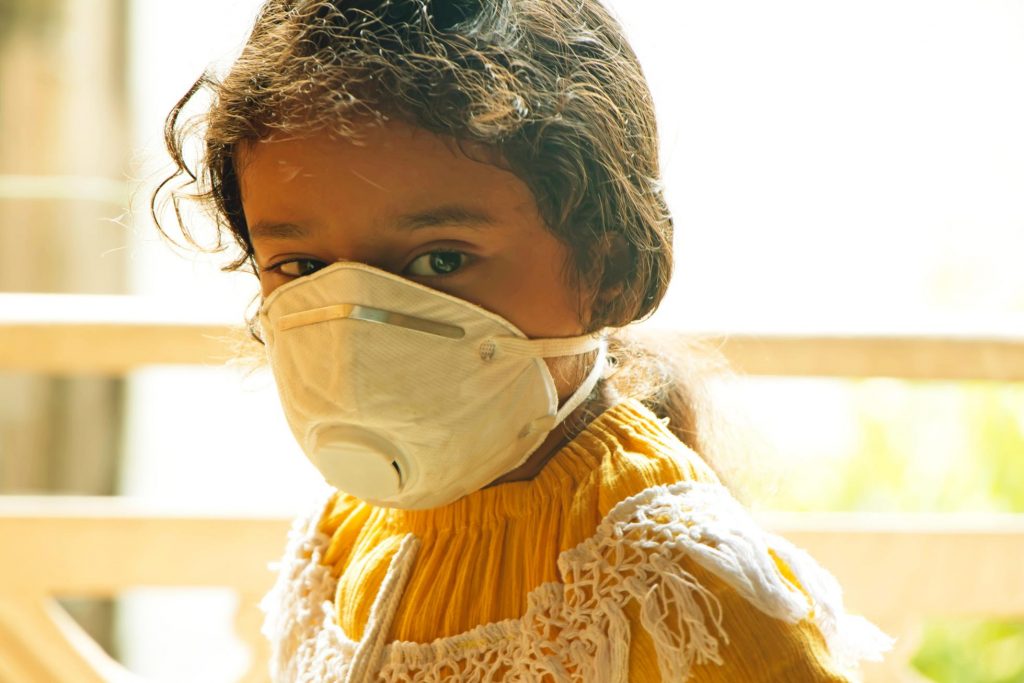Air pollution is among the greatest environmental threats to human health according to the World Health Organization (WHO), across not only low but also middle and high-income countries. It states that in 2019, 99% of the global population lived in areas that didn’t meet its recommended air quality levels.
The 2024 State of Global Air report notes that air pollution accounted for 8.1 million deaths globally in 2021, becoming the second leading risk factor for death, including for children under five years. While there may not be a huge amount you can immediately do to change where you live, even if it suffers from significant air pollution, you can choose where you travel to. Knowledge, then, is power.
If you want to avoid places with some of the most polluted air on Earth, no matter how appealing they may feel as a destination, the latest World Air Quality report from Swiss air quality technology company IQAir can help you decide where to go—and where not to—with its rankings of the world’s most and least polluted capital cities.
The report presents PM2.5 air quality data gathered from 8,954 cities across 138 territories, regions and countries. That data is provided by more than 40,000 regulatory air quality monitoring stations and sensors operated by everyone from government agencies to schools to citizen scientists around the world.
What is PM2.5 air pollution?
PM2.5 is the name given to fine particulate matter in the air that’s small enough to penetrate through the lungs and pass into our bloodstream (about three per cent the width of an average human hair) causing a range of health problems and diseases both to our cardiovascular and respiratory system, including stroke, lung cancer and chronic obstructive pulmonary disease (COPD).
The PM2.5 data is measured in micrograms per cubic meter (μg/m³) and then calculated against the WHO PM2.5 air quality guideline of 5.0 µg/m³—five micrograms of air pollutant per cubic meter of air. The air quality metrics in this 2024 report derive from IQAir’s real-time online monitoring platform, which systematically validates, calibrates, and harmonizes data from air quality monitoring stations globally.
Countries with the worst and best air quality
The ranking has some new entries in 2024, including Djibouti, Mozambique and Chad, which is ranked as the most polluted country overall. It is followed by Bangladesh, Pakistan, Democratic Republic of Congo and India as the five countries with the worst air pollution.
Others are missing from this year’s report thanks to a lack of available data—notably, Iran, Afghanistan and Burkina Faso, which was ranked as the fifth most polluted country from 2023 data.
Incredibly, only 12 countries, regions and territories recorded PM2.5 concentrations below the WHO guideline figure of 5.0 µg/m³. Most of these were in Latin America, the Caribbean and Oceania regions. They include the cleanest five overall – Bahamas, Bermuda, French Polynesia, U.S. Virgin Islands and Puerto Rico. Alongside a handful of other Caribbean countries, Australia and New Zealand in Oceania, and Estonia and Iceland in Europe also make it onto the exclusive “clean air” list.
The U.S. ranks as the 22nd cleanest air country with an average PM2.5 concentration of 7.1 µg/m³, three places behind Canada (6.7 µg/m³) and three places ahead of the UK (7.4 µg/m³). None of the three meets the WHO guideline figure.
The most polluted capital cities in the world
The world’s most polluted capitals have, in 2024, registered some startling and sobering air pollution levels.
The most polluted capital city is Delhi in India with an average PM2.5 concentration of 91.8 µg/m³ (remember the WHO guideline limit is 5.0 µg/m³.) Air pollution remains a significant health burden in India, reducing life expectancy by an estimated 5.2 years according to the report. Over the course of 2024, Delhi had the worst average air quality—although it’s not alone with six of the world’s ten most polluted cities in India.
The second most polluted capital is N’Djamena in Chad, a country regularly taking the top spot as the most polluted anywhere (when reliable data is available.) It registered an average PM2.5 concentration of 91.6 µg/m³. A major source of air pollutants is mineral dust blowing in off the Sahara Desert, at its worst during the dry and windy Harmattan season from November to March.
The capital of Bangladesh, Dhaka, is the third most polluted, registering an average PM2.5 concentration of 78.0 µg/m³—more than 15 times the WHO guideline. Following it in fourth is Kinshasa, capital of D.R. Congo with an average PM2.5 concentration of 58.2 µg/m³ and just behind it in fifth, Islamabad in Pakistan registering 52.4 µg/m³.
Here’s the full top 10 most polluted capital cities:
1. Delhi, India – 91.8 µg/m³
2. N’Djamena, Chad – 91.6 µg/m³
3. Dhaka, Bangladesh – 78.0 µg/m³
4. Kinshasa, D.R. Congo – 58.2 µg/m³
5. Islamabad, Pakistan – 52.4 µg/m³
6. Dushanbe, Tajikistan – 46.3 µg/m³
7. Hanoi, Vietnam – 45.4 µg/m³
8. Kathmandu, Nepal – 45.1 µg/m³
9. Abuja, Nigeria – 42.2 µg/m³
10. Jakarta, Indonesia – 41.7 µg/m³
The 10 least polluted capital cities in the world
At the other end of the scale, just 17% of global cities and eight capital cities meet WHO air pollution guidelines.
1. Nassau, Bahamas – 2.3 µg/m³
2. San Juan, Puerto Rico – 2.6 µg/m³
3. Papeete, French Polynesia – 2.8 µg/m³
4. Bridgetown, Barbados – 3.1 µg/m³
5. Reykjavik, Iceland – 3.8 µg/m³
6. Canberra, Australia – 3.9 µg/m³
7. Wellington, New Zealand – 4.3 µg/m³
8. Tallinn, Estonia – 4.3 µg/m³
9. Brasilia, Brazil – 5.2 µg/m³
10. Stockholm, Sweden – 5.3 µg/m³
To see the full list and do a deep dive into air pollution and its impact around the world download and read the 2024 World Air Quality Report

